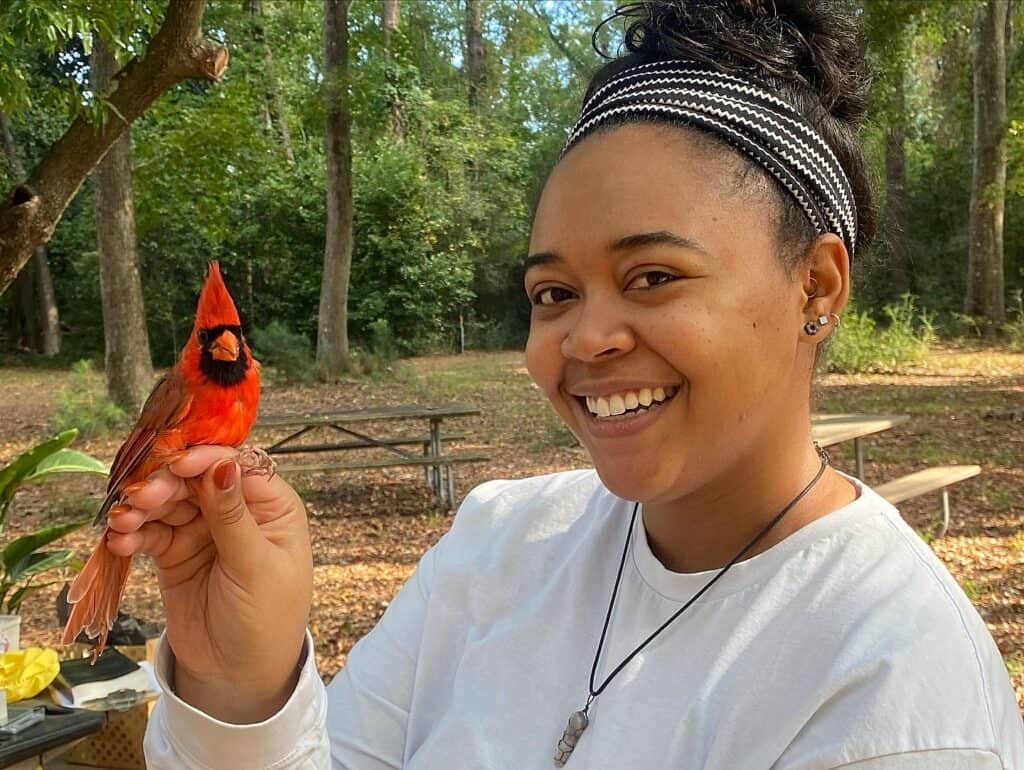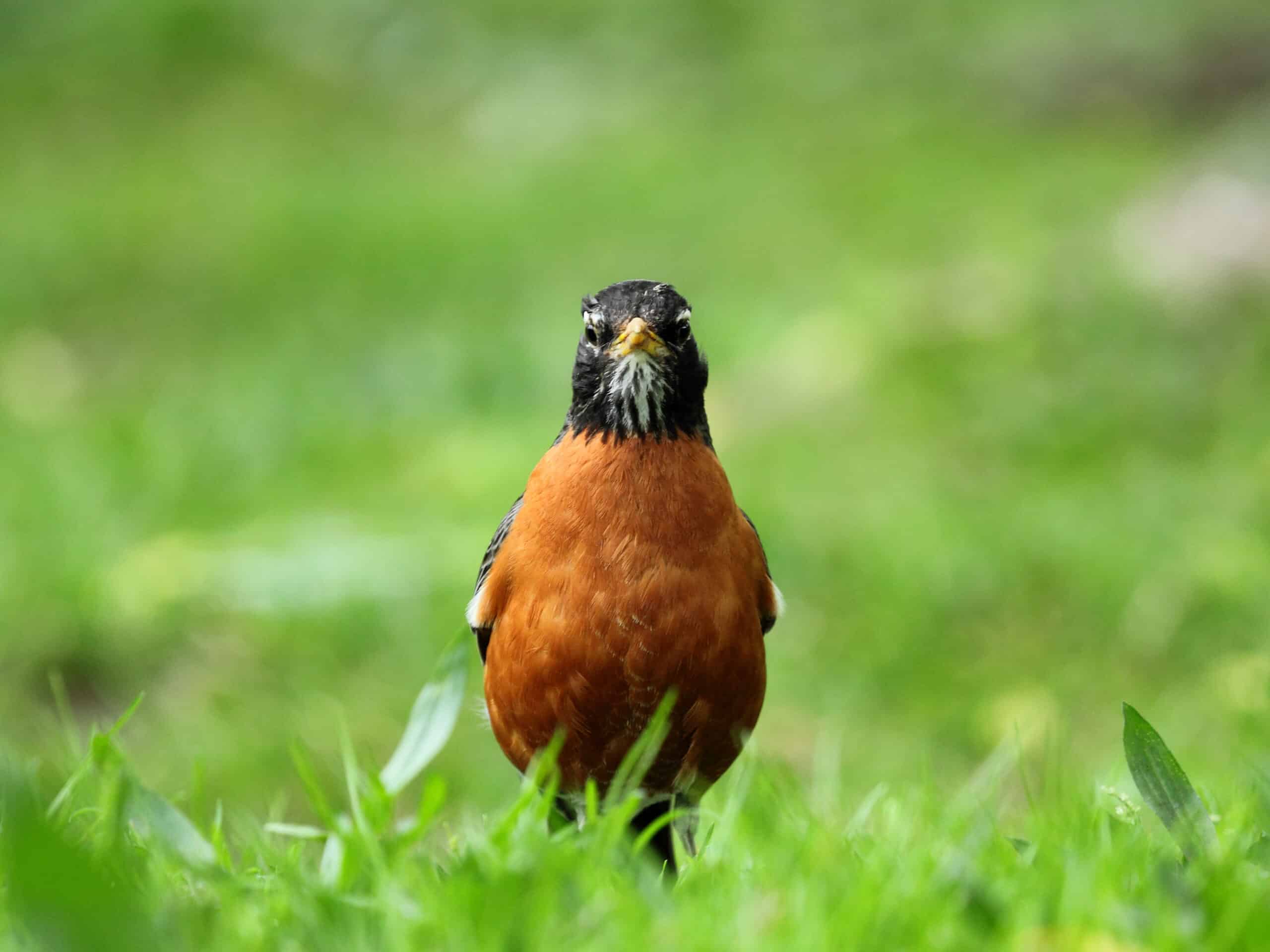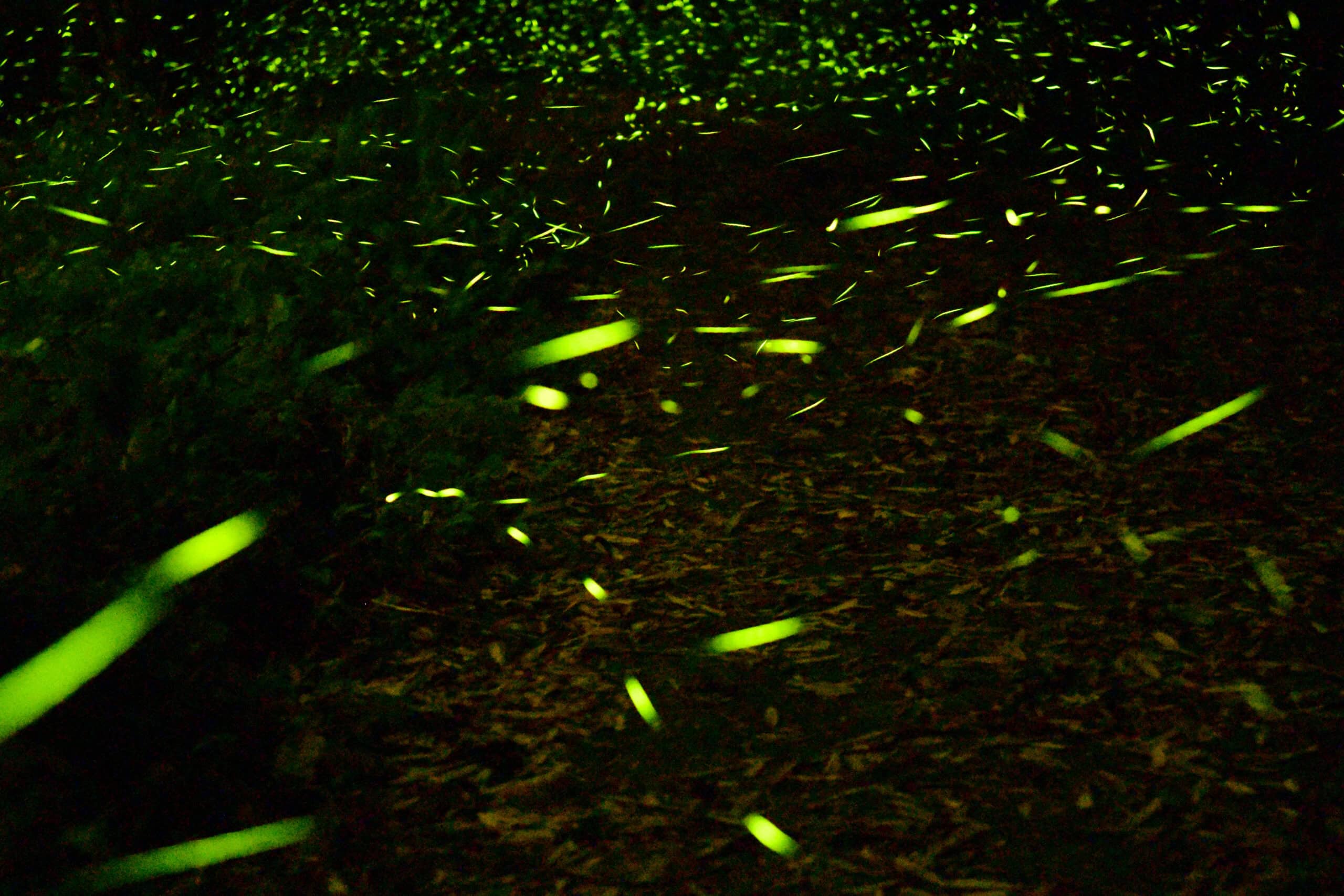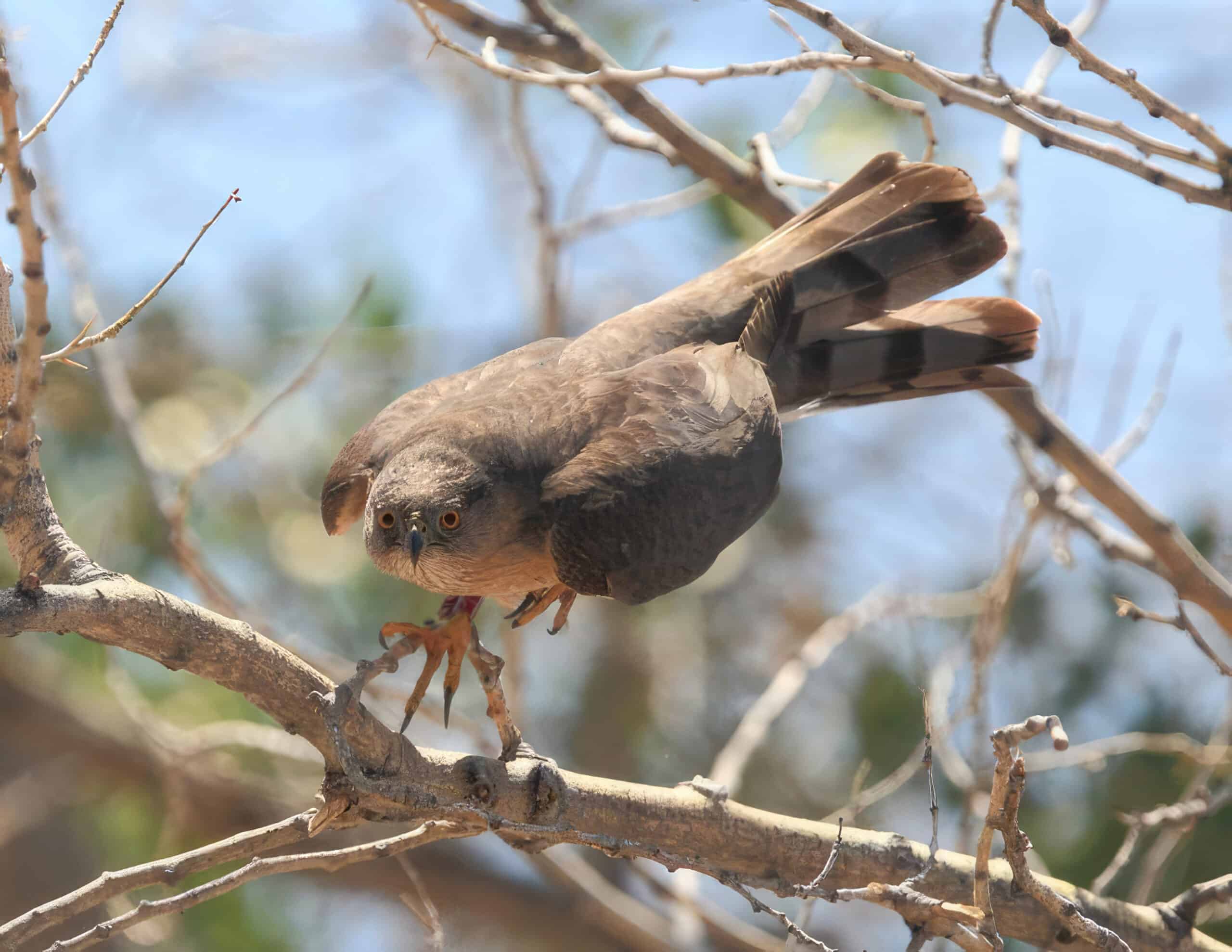Share this article
Wildlife Featured in this article
- gray catbird
- house wren
- American robin
- northern cardinal
Q&A: Shedding light on urban birds
Light pollution can be harmful to some urban birds, but robins make the most of it
Light pollution can be deadly for migratory birds, guiding them to fatal collisions with windows. But lights can have consequences for nonmigratory birds, too—and not always in a harmful way.
Tapping into citizen science data, researchers looked at how light and noise affected common birds around Washington, D.C. They found lower survival rates of gray catbirds (Dumetella carolinensis) and house wrens (Thryothorus aedon) in areas with more light pollution. American robins (Turdus migratorius), on the other hand, took advantage of the light.
We caught up with TWS member Lauren Pharr, a graduate student at North Carolina State University and the lead author of the study published in Urban Ecosystems, to talk about the findings. Her responses are edited for brevity.
Why study urban birds?
Due to more activity continuing to occur in urban areas, it’s important to understand how our local wildlife is responding to these anthropogenic changes. Birds are a keystone species. They provide us clues to what’s going on in an environment shared by so many other organisms. This study specifically focused on more generalist bird species that are more abundant in metropolitan areas than others.
You zeroed in on noise and light. Why those two factors?
Light pollution at night is known to be a deadly hazard for migratory birds, disorienting them and increasing collisions with buildings. Noise pollution has been shown to impact their communication behaviors. Relatively less is known about noise and light effects on annual survival of nonmigratory birds.
This study tapped into data from the Neighborhood Nestwatch Program. What is that and how does it work?
The Neighborhood Nestwatch Program is a citizen science study run by the Smithsonian Migratory Bird Center. In the study, biologists used nets to catch birds at 242 sites, mostly in the backyards of private homes across urban and rural areas of the greater Washington D.C. area. They tagged the birds with uniquely identifiable color bracelets. Then, volunteers looked for the color-banded birds in their neighborhoods throughout the year.

Robins appeared to benefit from city lights. Were you surprised?
Our findings about robins and lights were no surprise to me. Researchers already know that robins will start singing earlier in the morning in areas with more light pollution and use it to their benefit, potentially increasing the amount of time they have for finding mates or foraging.
What is happening with gray catbirds and house wrens?
The gray catbird and house wren sometimes migrate to states a little farther south, though not into Central or South America like so-called long-distance migrants. Researchers have said it’s possible that some of these species’ migration-related behaviors could make them more vulnerable to light pollution at night. For example, there has been some evidence that gray catbirds are more vulnerable to collisions.
What about noise?
We found no links between noise pollution and survival with any of our species. It was somewhat of a surprise because there have been studies that have shown noise pollution can cause an increased amount of stress on birds, ultimately affecting their health. I think this just proves there may need to be some more in-depth studies on bird survival and noise pollution, specifically.
What’s your biggest takeaway?
This study adds to our understanding that light pollution could have sublethal effects on birds. It also shows the power of citizen science. Citizen science is a wonderful and valuable tool, not only to help scientists get data for their projects but to get more eyes, ears and hands on them. The participants also get a chance to understand what we’re doing, why it’s important and to learn alongside scientists.
Header Image: An American robin appears at Constitution Gardens in Washington, D.C. Credit: Mr.TinMD








